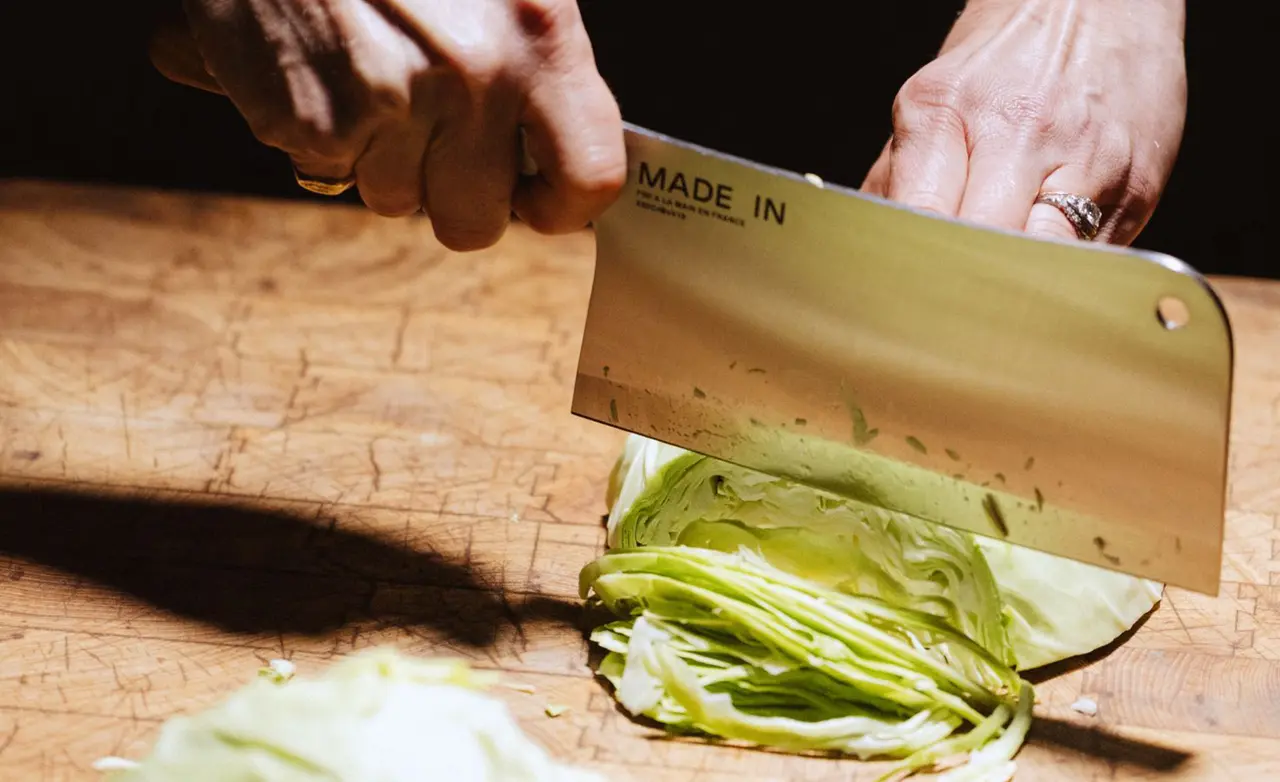There are two main kinds of Cleavers— one primarily used for meat and another for vegetables. Both have storied pasts and unique uses in the kitchen beyond just cutting their respective ingredients. So when we set out to make our own Olive Wood Cleaver, we studied both types and took the best parts from each to make a Cleaver that can do it all.
Here’s what makes both vegetable and meat cleavers unique, and how we combined their features to make a version we find superior to the rest.
The Meat Cleaver

A meat cleaver is just what it sounds like—a large knife with a wide blade that has the necessary force to cut through tendons and thick cuts of meat with ease.
The edge of a meat cleaver is less sharp than other kitchen knives, as weight and power is more crucial than finesse when handling large cuts of meat. Another distinguishing feature of a meat cleaver is the hole in the top corner of the blade, which was traditionally used by butchers for easy and secure hanging in their shop when the cleaver was not in use.
The Vegetable Cleaver

While a meat cleaver is thick and powerful, a vegetable cleaver—also known as a Chinese cleaver—is precisely the opposite. The blade is thinner, sharper, and comparably more delicate, with a bevel (or blade angle) of 25 degrees, compared to the 30 degree bevel typical of a meat cleaver.
This angle comes in handy for mincing, slicing, and dicing vegetables, and provides the same precision you’d find with a chef knife. It’s much lighter weight than a meat cleaver, which provides the control needed for cutting unwieldy vegetables.
Our Cleaver

We developed our Olive Wood Cleaver to be the perfect hybrid between a meat and vegetable cleaver. Its thick top is powerful enough to slice through thick steaks, yet lightweight and precise enough for a julienne. With a blade edge angle of 15 degrees and blade height of slightly above 3”, it’s perfect for almost every task, from vegetable prep to breaking down a whole chicken.
It’s a multi-tasker like a vegetable cleaver and a classic showpiece like a meat cleaver, complete with the traditional hole in the upper part of the blade. In short, it’s perfect for any knife task in any kitchen.
Ready to Shop?
Unless you own a butcher shop or are a big knife collector, it's probably not necessary for you to own two different kinds of cleavers. Get the best of both meat and vegetable cleavers with our Olive Wood Cleaver, featuring a Spanish olive wood handle and olive green leather sheath to protect the blade.































